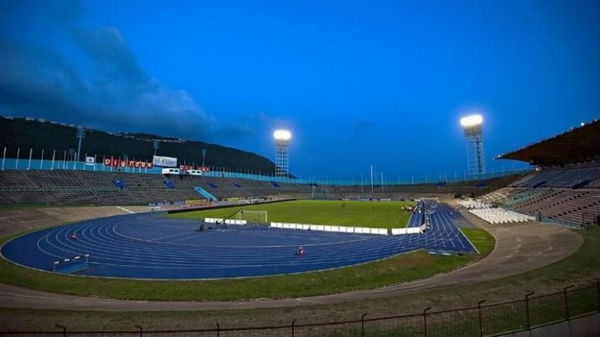
Imago
Credit: Christian Coleman Instagram

Imago
Credit: Christian Coleman Instagram
Christian Coleman’s latest victory was settled not just on the track in Zurich but also in the realm of record-keeping. Hours after he claimed the men’s 100m Diamond League crown by the narrowest of margins, the official report from a leading track outlet introduced confusion about his achievements. For an athlete whose reputation has often centered on precision in the blocks and unrelenting discipline in competition, the misstatement struck a discordant note.
Watch What’s Trending Now!
Coleman captured his third career Diamond League 100m title on Thursday, August 28, with a winning mark of 9.97 seconds. The finish was razor-thin. South Africa’s Akani Simbine crossed in 9.98, while Jamaica’s Ackeem Blake trailed by a hundredth in 9.99. Coleman, who previously secured series titles in 2018 and 2023, demonstrated his trademark explosive start and paired it with an ability to sustain speed through the line. For Simbine, the performance reinforced his standing as one of the most consistent global sprinters, and for Blake, it was an agonizing miss in his attempt to repeat as champion.
Yet the immediate aftermath of the race produced an unusual correction. FloTrack, a major digital outlet in the sport, reported the Zurich victory as Coleman’s second Diamond League title. Their post stated, “Christian Coleman notches his second 100m Diamond League title, this time in Zürich as he takes it in 9.97!” The miscalculation overlooked his earlier triumph in 2018. Coleman quickly reshared the same and responded with a succinct clarification. “*3rd title.”
ADVERTISEMENT
The exchange was not an isolated instance.
*3rd title https://t.co/SGBGh7AtGu
— Christian Coleman (@__coleman) August 29, 2025
FloTrack has endured scrutiny in recent years for production errors and misplaced emphasis during broadcasts. Fans have frequently noted technical issues with streaming, as well as coverage that at times highlighted unrelated segments while major races unfolded live. For athletes whose livelihoods depend on accurate recognition of results, the recurrence of such oversights has been a source of irritation. Coleman’s intervention was notable not only for correcting his personal record but also for underlining a wider frustration within the sport.
ADVERTISEMENT
By the close of the Zurich meet, the record was clear.
Coleman now stands with three Diamond League 100m crowns, joining a select group of American sprinters with multiple series titles. His margin of victory underscored the competitive depth of men’s sprinting in 2025, where hundredths of a second separate first from third. And in a discipline measured to the thousandth, Christian Coleman reminded the sport that precision must apply equally to the stopwatch and the written word.
ADVERTISEMENT
Adding to this, FloTrack’s history of missteps, from broadcast failures to on-air confusion, highlighted a troubling pattern of neglect.
Flotrack’s repeated blunders left track and field fans questioning its credibility
FloTrack’s stewardship of track and field coverage had already been a subject of scrutiny, but the past months revealed a deeper record of errors that left supporters exasperated. FloTrack’s tenure as a broadcast partner for track and field carried with it a series of missteps that did not go unnoticed by its audience. Technical interruptions marred live coverage, with streams freezing or cutting out in the middle of races, leaving fans unable to follow the competition. And this happened just about a month ago with a track enthusiast who shared the update on Reddit.
ADVERTISEMENT
In April 2024, when the Diamond League shifted to FloTrack, viewers quickly reported streams freezing mid-race and resuming only seconds later. Discontent spilled onto forums where one viewer described the product as “pretty much unwatchable.” However, at the beginning of this season founder and CEO of FloSports, Mark Floreani, promised to work on the issue. Even FloTrack conceded its shortcomings, noting during one incident, “We encountered issues with our VA Showcase stream briefly,” before offering the remainder free online on a X post from their official account.

Imago
Credits: Instagram
The most visible misstep arrived during an episode of The Meet Up, when the hosts fumbled through a discussion of Olympic team qualification. Johnny Pace questioned, “So, what does that mean? If you win the Diamond League final, then you get a wild-card entry. Is that right?” His colleagues admitted uncertainty, with one conceding, “I’m actually not sure.” For an outlet holding U.S. Diamond League rights, this exchange proved a telling moment.
ADVERTISEMENT
The incident quickly migrated to X, where a fan account reposted the clip with a pointed caption.
Top Stories
Forced to Leave FOX, Cowboys Legend Troy Aikman Says ESPN Is Like ‘U.S. Government’ & Clearly Distinguishes the Two Networks

Who Is Paige Shiver? All About Michigan Football Staffer & Daughter of Veteran Bears Scout Jeff Shiver

FOX Issues Strict Ban on Terry Bradshaw But NFL Legend Defies It to Join Popular Morning Show

Michael Jordan Brings NASCAR to Its Knees as Jim France’s Courtroom Collapse Triggers Settlement

What Happened to T.J. Watt? Why Is He Hospitalized? Steelers Announce Latest News on LB Before Dolphins Game

LIV Golf to Cut Ties With Veteran Pro After His PGA Tour Return Intentions Became Public

“Come on, guys. You’re the outlet that has the US diamond league rights. You should know how the diamond league works!” What might have been an isolated lapse instead reignited grievances that had long simmered. Viewers had endured streams that appeared late despite being advertised as live, only to be served delayed replays. Others cited erratic production values, where pictures blurred, camera choices faltered, and timing graphics simply vanished from the screen. Such problems were not occasional blemishes but recurring frustrations.
In addition to technical shortcomings, the coverage itself often left spectators dissatisfied. Certain events were neglected in favor of generic feeds, even as rival broadcasters offered immediate, uninterrupted access. These shortcomings accumulated into a portrait of neglect rather than refinement. What should have been a showcase of the sport’s finest moments instead reminded audiences of the gulf between expectation and delivery.
ADVERTISEMENT
ADVERTISEMENT
ADVERTISEMENT
ADVERTISEMENT

